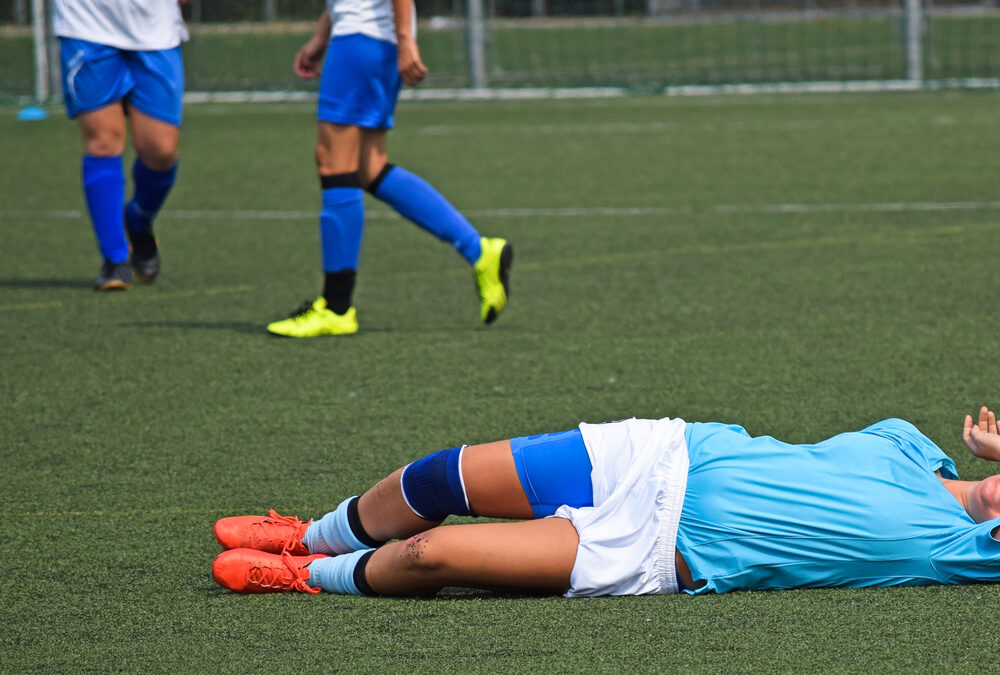Rest remains the standard treatment for concussions in young athletes. However, worrisome data continues to accumulate around the short- and the long-term effects of even mild concussions among young people. Hyperbaric oxygen therapy may offer symptomatic relief of symptoms, but an objective measurement of brain function has been needed. A new study published ahead of print in Undersea and Hyperbaric Medicine (UHM), evaluated the effect of HBOT on acute concussion using an EEG-based brain biomarker. I asked the author, Dr. Daphne Denham, to explain the study results and what they mean. Check out the publication ahead of print. EEG-based brain biomarker supports hyperbaric oxygen therapy for acute concussions.
–Caroline
Imagine sitting and watching your daughter play volleyball, lacrosse, hockey, or any other sport, and she takes a hit to the head and crumples. She stands back up, dusts off, but stumbles just a little. Coach pulls her out. On the ride home, she just isn’t herself. She complains of a mild headache, a little nausea, but she insists she is fine. The next day you take her to the doctor who says “I think she may have a concussion. The best thing to do is rest. Go to the ER if she gets worse or if she throws up. I’ll see her back in 2 weeks. Her concussions could take a while to heal.” It is frustrating that “waiting and watching” are the best we have to offer in 2025.
In this study we used BrainScope, an FDA-cleared device that aids in the diagnosis of a concussion to evaluate the potential effect of HBO2 on brain function after concussion. It uses EEG (electroencephalogram, or brain waves) as a brain biomarker. Each BrainScope test assigns a score between 0-100, called the Concussion Index, which indicates the severity of a concussion. Lower numbers are associated with more potentially severe problems. Scores less than 25 are severe concussions, 26-50 are moderate concussions, 51-70 mild concussions, and scores greater than 70 are considered non-concussed.
Eleven individuals [mean age: 16±2.2; six male (55%)] participated, presented one to nine days (median: three) after injury. Their median baseline EEGBB score was 18 (range: 1 to 35) – which suggests severe concussions. The median first and last post-treatment scores available were 84 (range: 32-90) and 85 (range: 75-89), respectively. The median number of HBO2 treatments was three (range: 2-8) administered over a median of two days (range: two to five). Ten of the 11 received a post-treatment follow-up score 2- 22 days after treatment completion. The median final score was 85 (range: 64-90). There were no adverse events. These preliminary data demonstrate that the EEGBB objectively supports the use of HBO2 to treat acute concussions. The results are encouraging, so we are in the process of repeating the study with a larger group of subjects.
We are hopeful that we may finally have an effective treatment to offer young people who suffer from concussion – rather than waiting, watching , and hoping they will return to normal.
Daphne W. Denham, MD FACS FACCWS
Healing with Hyperbarics, LLC
1535 Lake Cook Road, Suite 404
Northbrook, IL 60062
(847)559-8426
(847)559-7708 fax

Dr. Fife is a world renowned wound care physician dedicated to improving patient outcomes through quality driven care. Please visit my blog at CarolineFifeMD.com and my Youtube channel at https://www.youtube.com/c/carolinefifemd/videos
The opinions, comments, and content expressed or implied in my statements are solely my own and do not necessarily reflect the position or views of Intellicure or any of the boards on which I serve.




I hope their next study includes a control group, who do not receive HBO. Several people have told me that elite athlete sports facilities, such as those used by professional football teams, now have HBO chambers. What are their experiences? It would be a good article for your blog.
I listened to and chatted with Daphne Denham MD about 6 or 7 years ago. I was extremely excited on her findings. I had not heard a peep since and thought that perhaps her remarkable successes didn’t hold up. It is great to see this moving forward. Concussion in adolescents is often a powerful destructive force and anything that can help is often life changing.